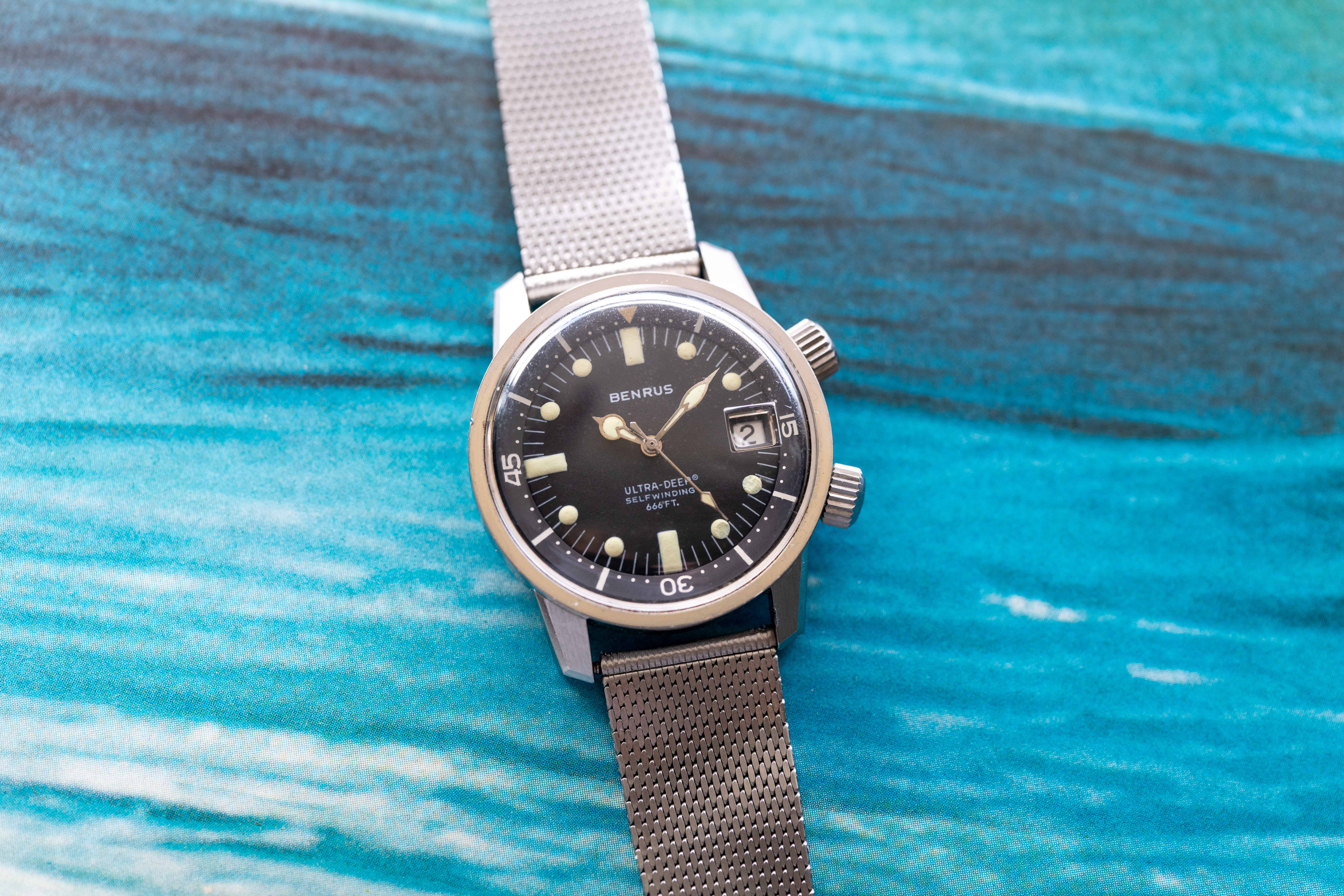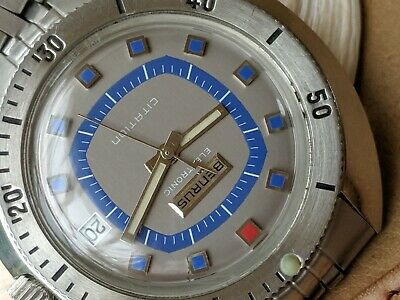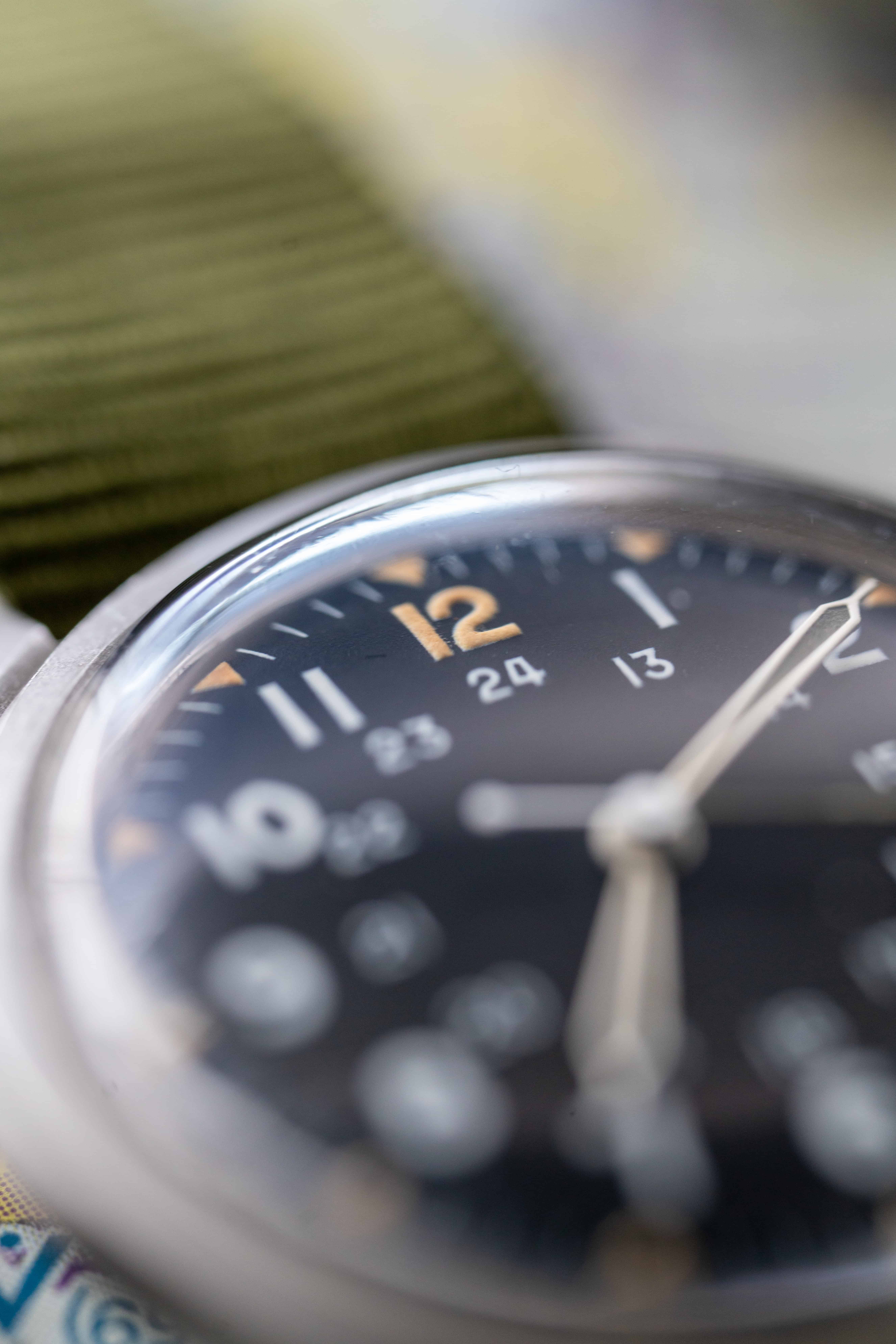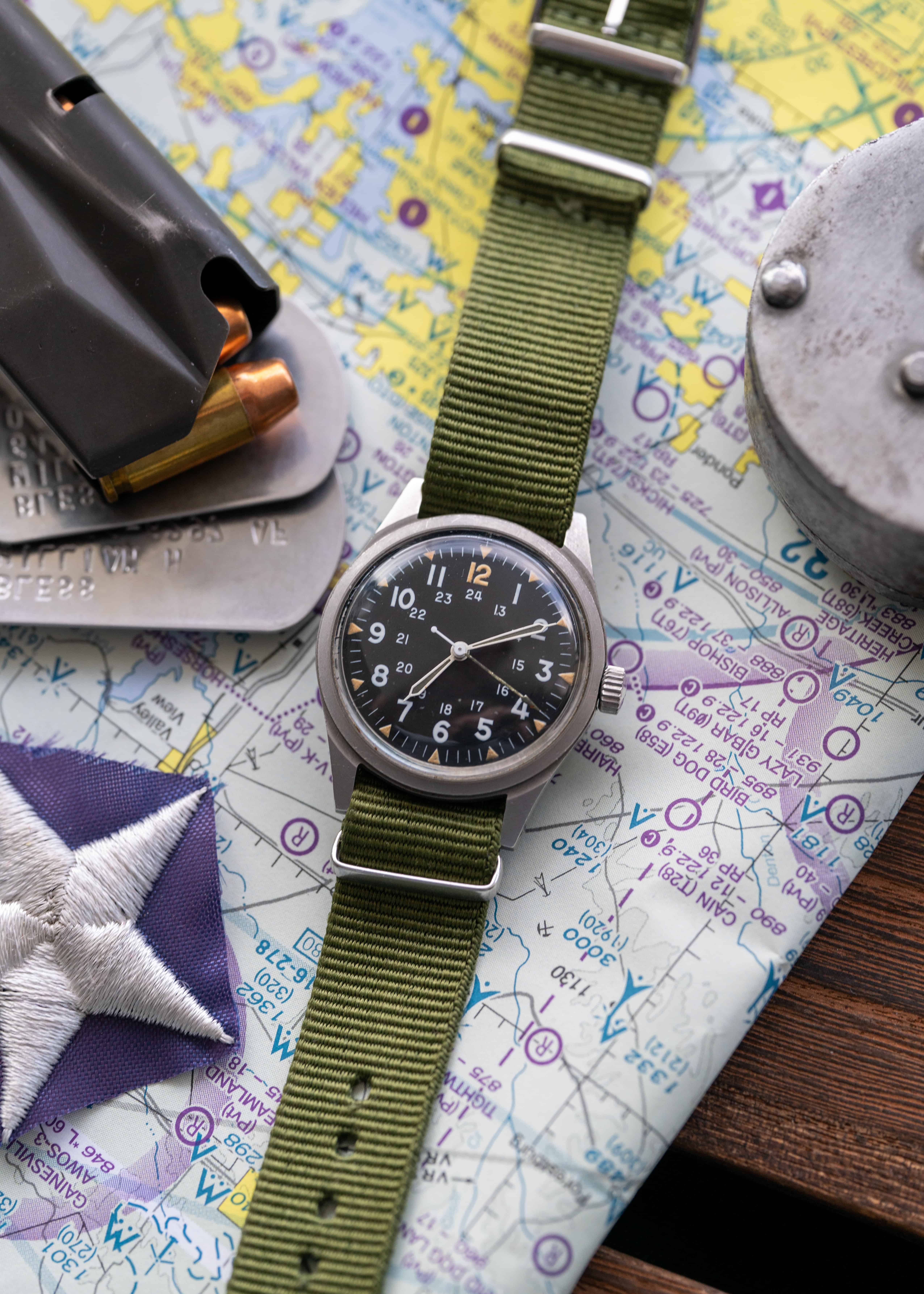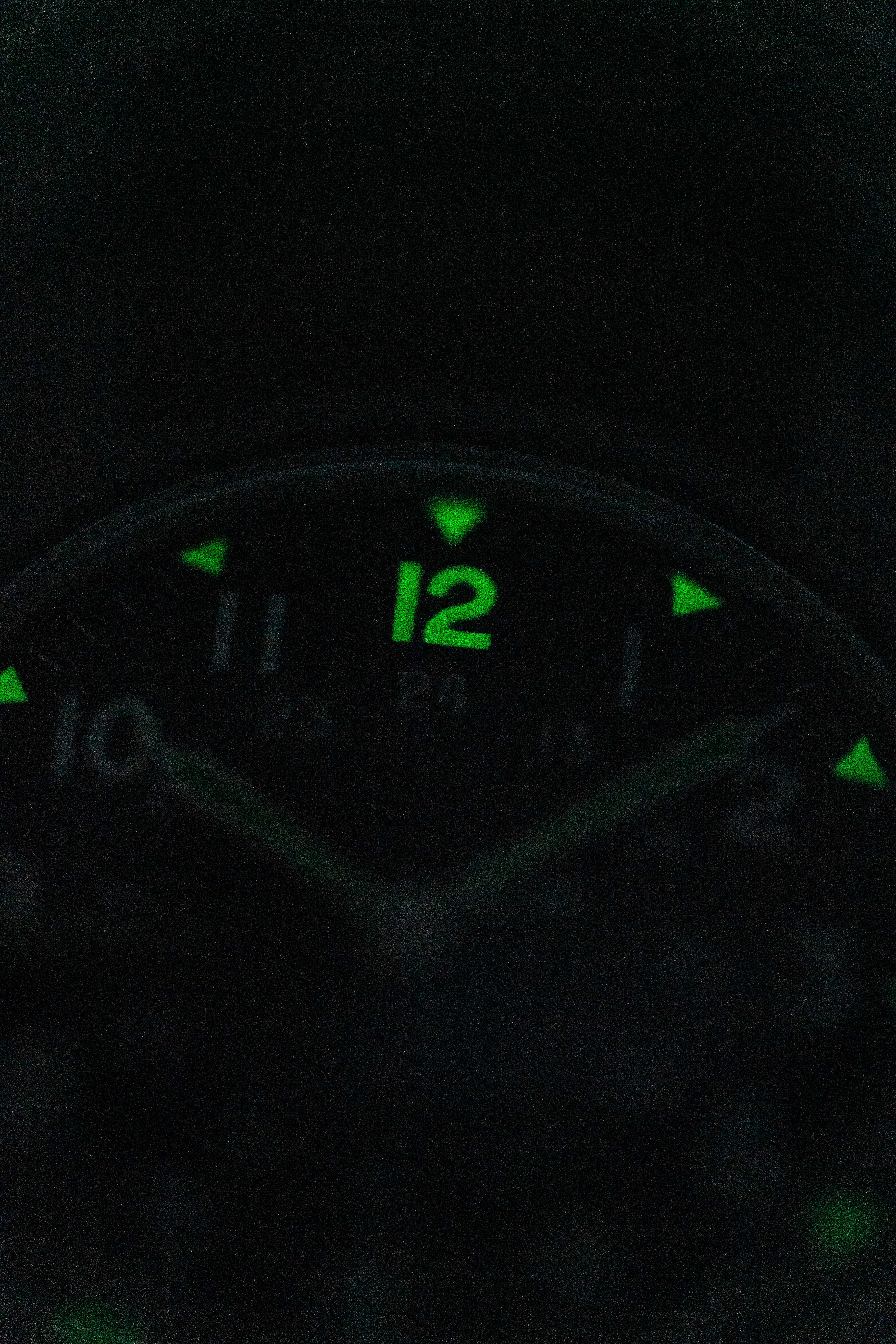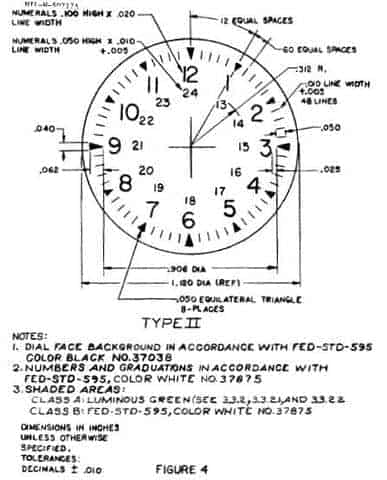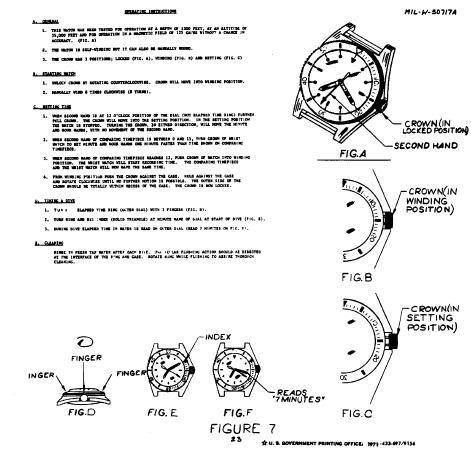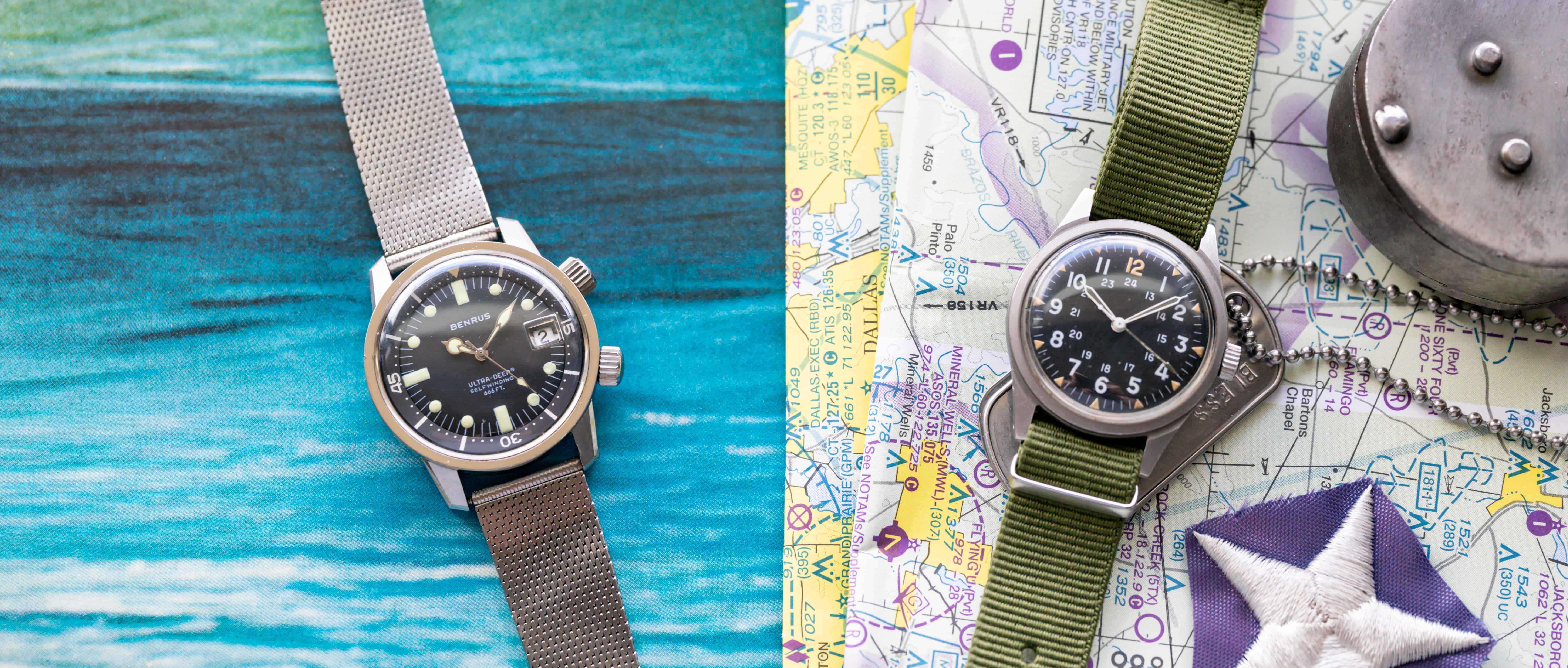
Today, we take a deeper look into one of America’s most iconic watch brands.
When we talk about vintage American watch companies, there are many that have deserve more recognition. One may even be surprised to learn that there was once a time when American watch brands were giving European counterparts a run for their money. These companies answered the needs of Americans whether they were diving or racing, on base or in battle, or simply keeping track of your shift, American companies provided some of the best tools around. Today, we’re taking a look at one of America’s most successful watch companies: Benrus.
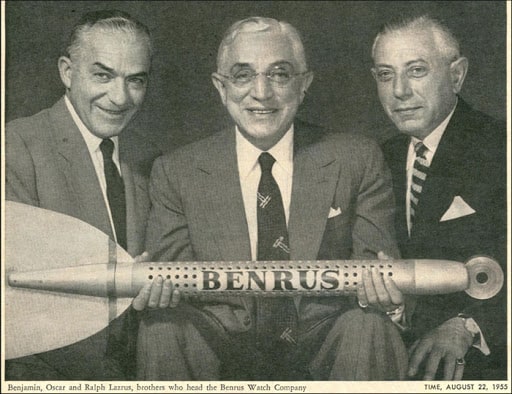
The company’s story centers around its’ three founders, the Lazrus brothers. The oldest, Oscar and Benjamin, emigrated to the United States from Romania at ages 2 and 6, respectively. The third, S. Ralph Lazrus, was born 8 years later in New York City. The trio grew up together fascinated by business as they followed the American dream. Benjamin was the first to dive into the jewelry business at the age of 18 as he worked while attending Columbia University. Just over a year later, Benjamin was drafted to serve the U.S. Army in WWI. After making his return, Benjamin spawned a wild idea to unite the three brothers in business to start a watch company.
Founded in 1921 by Benjamin Lazrus and his two brothers, Oscar M. and S. Ralph Lazrus, the trio combined $5,000 to front Lazrus’ wild idea. By joining the first syllable of the Benjamin’s first name [ben] with the last syllable of the brother’s last name [rus], Benrus was born. Oscar, an attorney, was in charge of advertising and finances for the company. Benjamin was in charge of general operations as he understood the jewelry business most. Ralph handled the sales of the business as sales were his passion. At one time or another, each brother would eventually serve as President of the company.
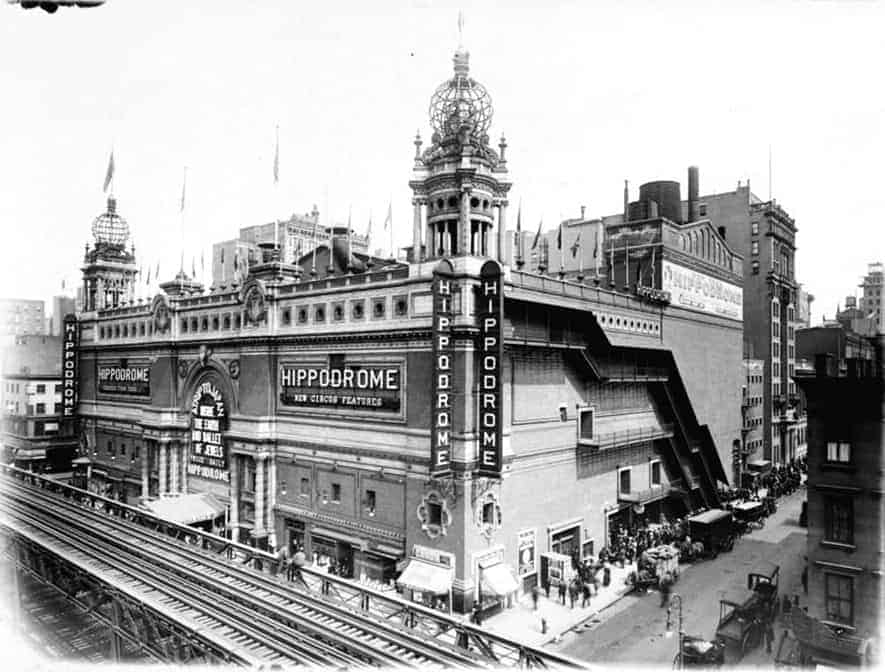
Despite big ambitions, its hard to say that the brothers would expect the success they would receive as Benrus grew to become one of the major players among the American watch companies. The brothers initially debated whether or not to have Benrus produce its own watches or only provide watch services, but after a short run of watch repair, the brothers made the full switch to original watch production. From this point forward, Benrus aimed to produce affordable tool watches by importing movements and parts.
After some early sales, Benrus made a move to the historic New York Hippodrome building in 1923 just as Lazrus successfully trademarked ‘Benrus’ from the Swiss federal office for intellectual property. Now on 6th Avenue between West 43rd and 44th Streets, the brand quickly grew a foothold in the Jewelry District. The manufacturing of watches took place at one of three facilities under Benrus’ ownership: the headquarters, a factory in la Coux de Fond where its watch movements were assembled, and a factory in Waterbury, Connecticut where cases were produced. Benrus later expanded to meet higher demand, acquiring factories in France, the U.S. Virgin Islands, and St. Thomas.
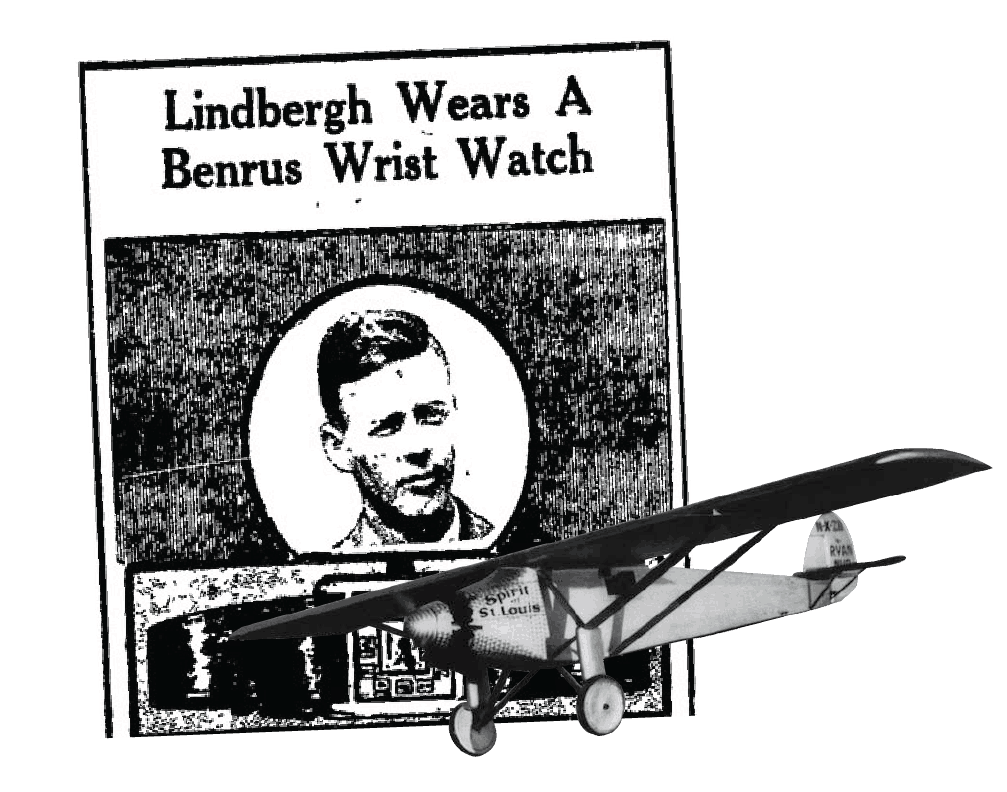
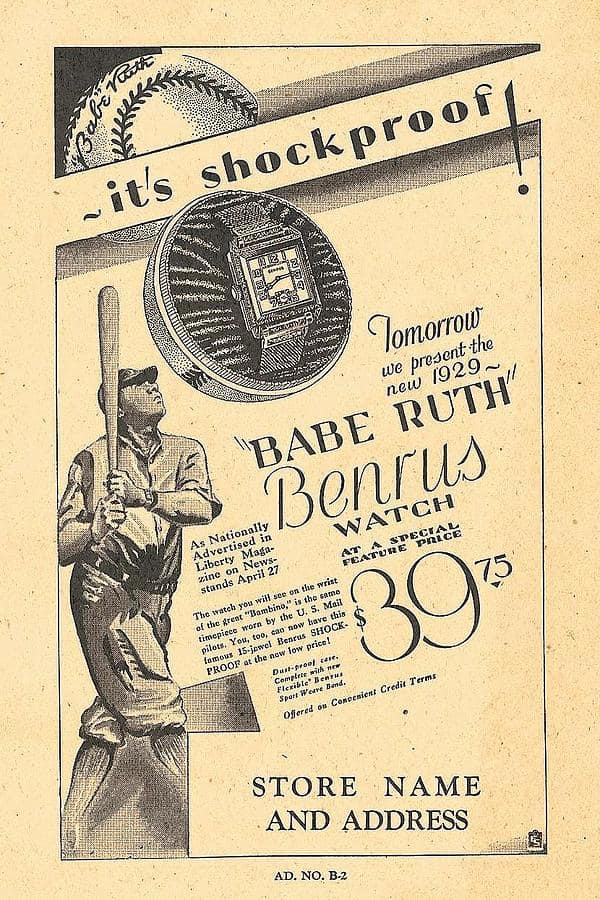
Soon after their move in 1923, the company launched one of their most successful marketing campaigns with Charles Lindbergh. Advertisements showed a Benrus Tank watch with the title “Lindbergh Wears A Benrus Wrist Watch,” a major success for Benrus as Lindbergh was arguably the biggest celebrity in the world at the time.
Following this major success, Benrus knocked it out of the park just three years later with a successful campaign for their new sportsman’s watch with the help of Babe Ruth. The new advertisements showed illustrations of Babe Ruth hitting with a Benrus on his wrist, a terrifying site as the lume likely was rolling around the case like sand in a shaker!
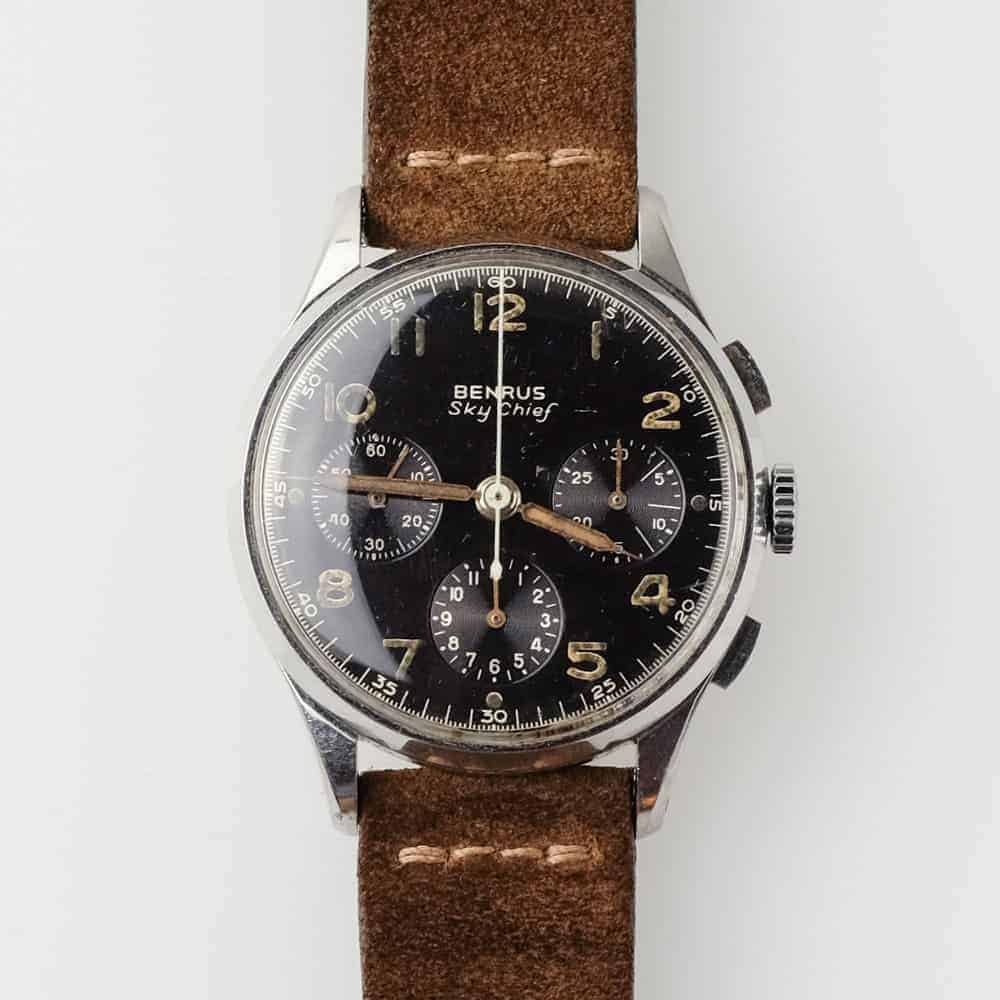
Credit: Veblenist.com
Benrus continued the success of Babe Ruth’s watch by providing aspirational individuals with affordable luxury designs. These iconic watches varied in design greatly from cushion cases to tank cases as the brand continued its growth throughout the 1930s. As the second World War approached, Benrus saw an opportunity to provide tool watches for the United States Armed Forces as they could fulfill military contracts. Despite this vision, Benrus settled for secret U.S. Military contracts that refocused their manufacturing to timing systems (fuses, etc.) that were commonly used in munitions. Despite some claims stating the company stopped manufacturing watches during WWII, Benrus still produced and sold watches to civilians, shipping their movements to America via Lisbon, Portugal. Additionally, Benrus was able to develop and launch one of today’s most commonly known Benrus models: the Sky Chief. The chronograph was developed alongside the world’s leading aviation companies and the watch quickly became the “Official Watch of Famous Airlines.”
After WWII came to a close, Benrus continued its climb as its newly freed resources from the exhaustion of military contracts allowed them to finally meet the demand for their watches. This was a particularly good period for Benrus as they were able to purchase Swiss movements at a lower price as Europe recovered from the war. Benrus designers worked overtime to place these affordable movements into unique cases to capitalize on this market demand. A notable example was the introduction of the Benrus Embraceable, one of the earlier examples of a watch with an integrated bracelet.
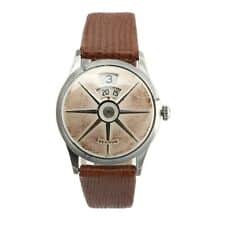
Credit: eBay.com
The Embraceable was followed by the Benrus Citation, named after a famous racehorse, and the famous “Dial-O-Rama.” One of the most prominent jump hour direct read watches, this particular Benrus is one of the more collectible models.
The postwar period of growth also allowed the brothers to bring more family members aboard the gravy train, most notably Oscar’s two sons: Jay Kay and Julian. Jay Kay, a Harvard grad and WWII Lieutenant in the Air Force, would eventually become Vice President of Benrus. Julian worked his way to become the head of the Waterbury plant as he later became President of Benrus.
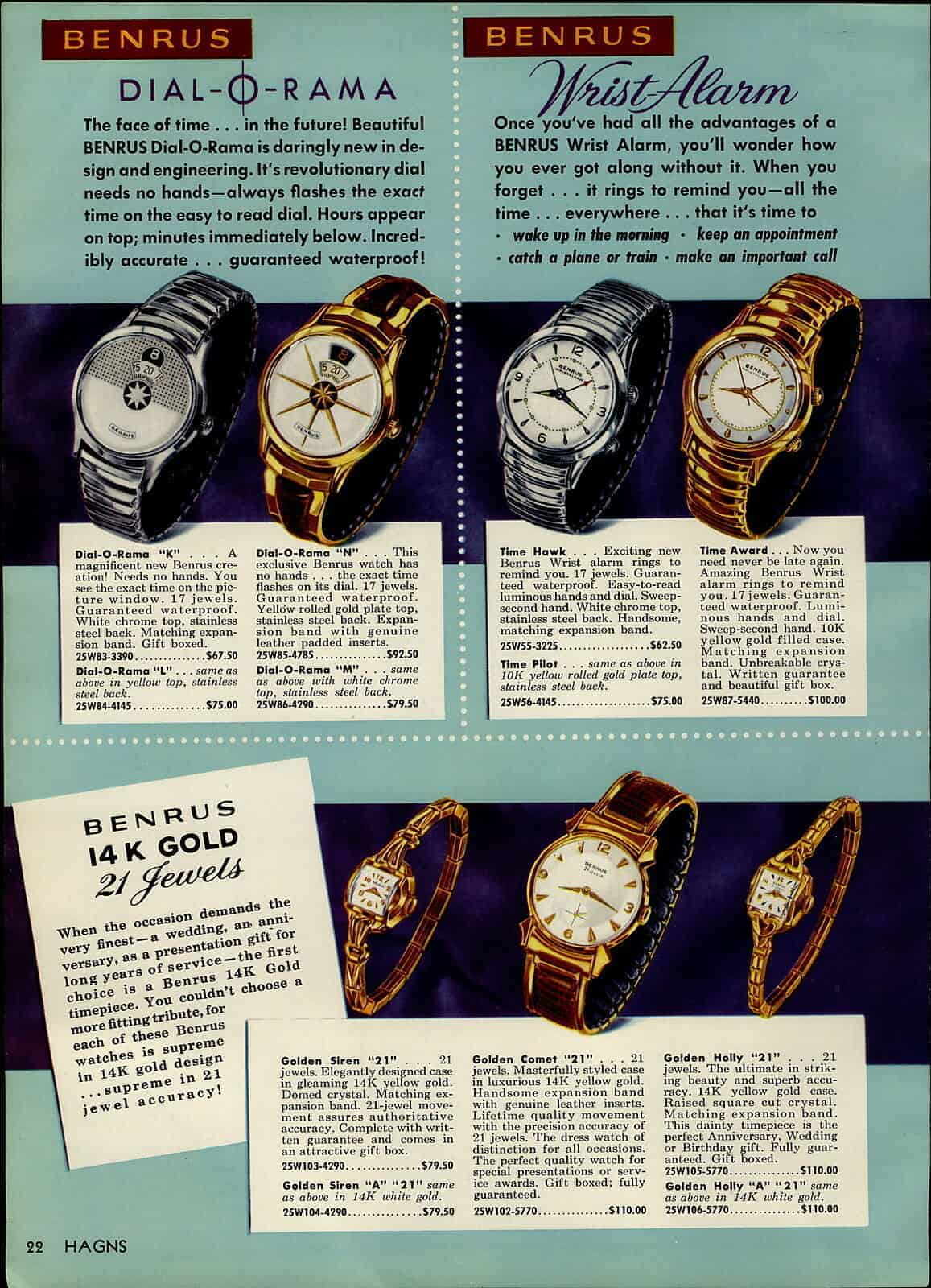
Moving into the 1950s, Benrus fully embraced print advertising as it was ready to begin the new era of American business. Its affordable luxury watches were seen by a wider audience than ever before as the company increased distribution and production. Dress and casual watches were produced and were advertised alongside one another as the decade became the company’s most profitable ever. One such reason of this great success was their recent triumph over the famous Hamilton watch company. This victory propelled Benrus as it became the third largest watch company in the United States, behind the giants Bulova and Elgin. Both brands were difficult to compete with as their business models focused on cheap movements and low retail prices.
Great Controversy / Troubled Trade / something
In the first part of 1952, Benrus caught wind of a proposal presented by the U.S. Tarrif Commission that recommended an increase in import duties on Swiss watch movements. As Benrus used solely Swiss made movements, the brothers understood the potential for great damage to the business. To preempt the supposed impending increase in import duties, Benrus was eager to find a way to produce movements in the United States.
After coming up empty in a search to find solutions for U.S. based movement production, Benrus began a wildly controversial plan: a hostile takeover of their competitor, Hamilton. Starting in the second quarter of 1952, the plan was well underway as Benrus took to the New York Stock Exchange, incrementally purchasing stock of Hamilton Watch Company. The initial tranche of stock surpassed 10% at the start of 1953’s third quarter. Only six months later, Benrus increased their holdings of Hamilton stock to 24%. The first part of the company’s plan was a success as Benrus’ 24% allowed the company to appoint members to Hamilton’s board of directors. The terms allowed Benrus to appoint one member per year on a three-year term.
Benrus added another wrinkle in the fold of their plan as they hoped the Hamilton takeover would allow them to take advantage of patents it held for a number of vehicle clocks. In their eagerness, Benrus pushed the envelope even farther as they began pressuring Hamilton to come to an agreement to produce the clocks or have Benrus take over as the sole owner of Hamilton.
This move would prove to be a great mistake to Benrus as it would alert Hamilton’s legal team of the larger plot. Hamilton’s attorneys now fully believed Benrus was attempting a hostile takeover and filed a lawsuit. Claiming a violation of U.S. anti-trust laws, Benrus defended their moves on the NYSE toward Hamilton as a hedge against the proposed tariffs. Despite the defense, Hamilton won an injunction and Benrus was now left to clean their wounds – still unable to find a solution for the impending tariffs.
The great controversy of the 1950s proved to be exhausting for the company’s three founders. Despite all three brothers wishes for retirement, Oscar saw an opportunity to buy his brothers out and plan for his succession. The buyout was a success as Benjamin and Ralph moved on. Benjamin began a real estate company and Ralph passed only a few years after in 1959.
Despite the great controversy of the 1950s, Benrus continued growth in the 1960s as they fully embraced the new trend of steel tool watches for the general public. Moving away from gold, the company was able to increase its profit margins and position itself as the prideful American source for all watches from the ocean to the boardroom. The 1960s saw the introduction of its successful Ultra-Deep and standout pieces such as the Sea Lord, the Citation and the avant-garde Dial-O-Rama.
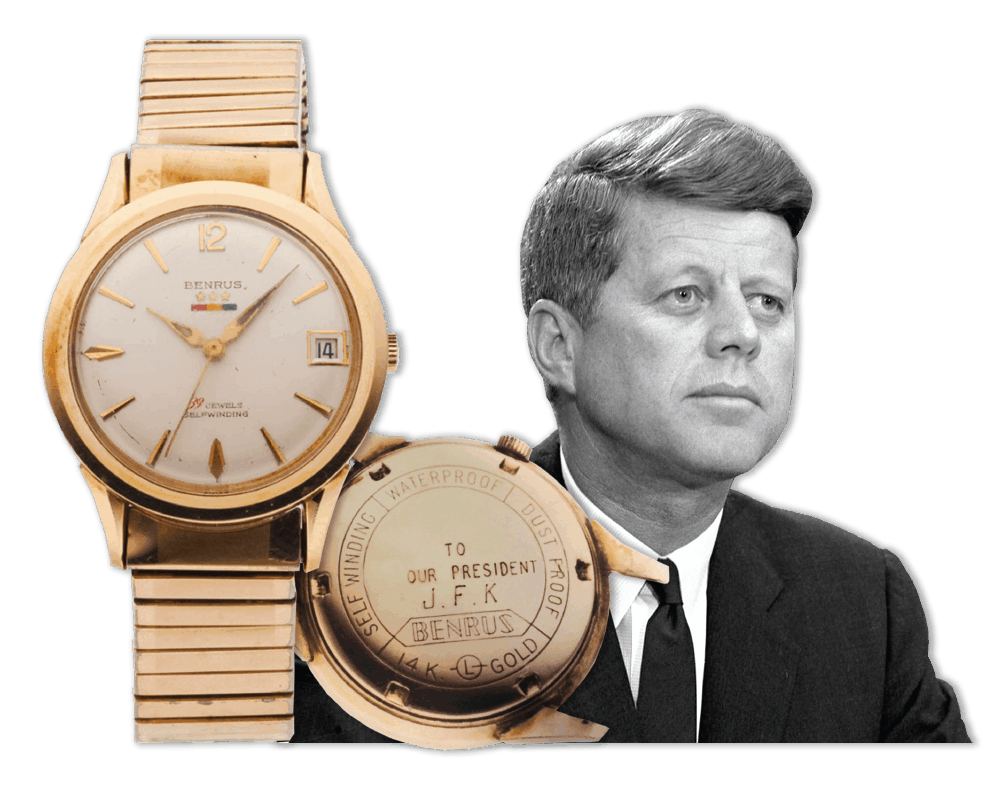
Only three years into the decade, Benrus found itself the lucky producer of the Democratic National Convention’s gift to the late President John F. Kennedy. The DNC commissioned a unique Benrus for JFK, a 14k self-winding time and date watch engraved on the back ‘TO OUR PRESIDENT J.F.K.’ The watch was worn by President Kennedy only for a short time until as he reportedly found the watch far too heavy and feared losing it as a result of its loose bracelet. Ultimately, the President gifted it to a close aide and friend of his, Dave Powers, with whom the watch resided for more than 35 years until he consigned the watch to Sotheby’s in 1997. Almost 13 years later, the watch was resold by Heritage Auction House for a mere $23,900. It’s interesting to note that with Heritage’s ‘Make an Offer’ program, the watch received two offers in April of 2017 for $32,000 and $35,000 respectively. It certainly would be interesting to see what it would sell for today!
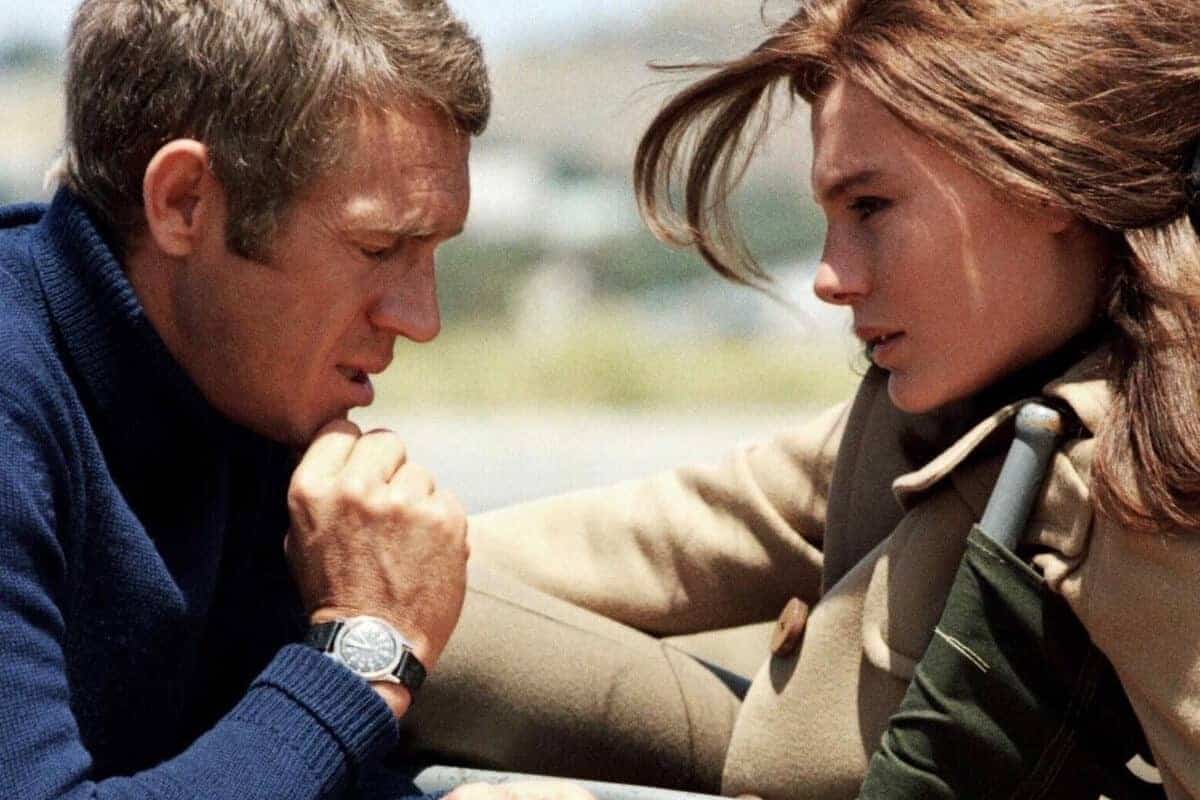
Continuing the monstrous decade for Benrus, in 1964 the company was awarded the MIL-W-3818 order for the standard issue Vietnam field watch. The field watch was given to nearly every service member in Vietnam and further cemented Benrus’ position as one of the finest producers of military field watches. Further proof came four years later when actor Steve McQueen wore his own Benrus field watch in the iconic 1968 film ‘Bullit.’ The Benrus 3061 is now commonly known as the ‘BULLIT’ Benrus. With the famous ‘Bullit’ Mustang selling for $3.74M (nearly 30x the market value of a standard 1968 Mustang Fastback), could one assume that the original ‘BULLIT’ Benrus would sell for 30x its own market value? Maybe not. But if someone knows where that watch might be, we’d love to hear from you!
One of the most rare Benrus field watches comes in the form you see above. The present example is a 1968 Field Watch with a rare luminous 12. These examples were extremely useful as they added the obvious ability to read the time in dim lighting. This particular example is like a time machine with a razor sharp case. The dial is beautifully balanced and wears extremely well, and the luminous 12 provides a wonderful pop of color that never gets old! This particular example is currently being offered by Eric Wind of Wind Vintage. For around $850, you can get a highly executed watch with military provenance with the added touch of rarity thrown in the mix all making what we believe to be one of the best bargains in vintage watches today. To inquire about this watch, head over to Wind Vintage or Eric’s Instagram to inquire about this fantastic piece of Benrus and American history.
The end of the 1960s brought the end of the Lazrus’ brothers’ involvement in Benrus. Oscar sold the business to Victor Kiam. This new beginning of Benrus was unfortunately one of great decline. Kiam lamented to the rising trend of cheap Japanese Quartz movements and the rise of Timex. The shift to cheap movements meant the declining use of Benrus’ existing factories and existing contracts, eventually resulting in Kiam stripping the business of its most valuable assets.
While the sale resulting in Benrus’ decline, the company closed out the decade by releasing two of the most iconic military dive watches of the era: the Benrus Type I and Type II. Developed to acquire a large military contract, these dive watches met the MIL-W-50717 specifications as outlined in the Type II figure below.
The case design was different from most watches of the time as Benrus opted for a “monocoque” case, meaning the case itself was all machined from one block of steel. In fact, the only way to access the movement is by taking the domed crystal, hands and dial off. This design allowed for the watch to be far more durable and increased the depth rating of the watch considerably. Finally, the fixed spring bars matched other military issued dive watches as they added security and removed a common weak point of dive watches.
Our friends over at Craft + Tailored have featured a beautiful example of a Benrus Type II in the fantastic video series, ‘What is On My Wrist.’ Their 1972 example is in wonderful condition with a clearly unpolished case and a very well preserved bezel. Be sure to check the video and if you’re interested check out their listing of the watch here!
The Type I and Type II became the military standard for the UDT (Underwater Demolitions Team), the predecessors to the Navy Seals, the Army and even the CIA. These watches today wear incredibly well and have a soft spot in the hearts of many collectors.
Despite the brand’s name still existing today, most believe the true heart of Benrus was a victim of the Quartz Crisis. During its height, Benrus was one of the most successful American watch companies as it tugged on the patriotic heartstrings of the typical 20th century American. Benrus’ have been worn by Presidents, famous actors, all-time baseball players, record breaking pilots, and by soldiers defending democracy and tyranny around the globe. The brand had an incredible run and unfortunately was killed by the well-known Quartz Crisis. Today, the brand only lives by name as the current owners produce a Heritage Collection with a smattering of Japanese and Swiss-made off-the-shelf movements.
Recent auction results of Benrus are highlighted by a pair of CIA issued Benrus watches. The Benrus 6088 and the ‘crazy-mouhtfull-that-makes-Seiko-reference-numbers-seem-normal’ Benrus DTU-2A/P MIL-W-38188 are the first confirmed watches worn by CIA operatives during active duty in Vietnam. The pair were consigned to Phillips from the family of the original owner and were sold in their ‘Game Changers’ NY Auction for $30,000. For more info on these, check out Isabella Proia’s writeup here. Despite these strong results, most Benrus’ can be found for under $3,000, making them a great entry into the world of historic and iconic vintage watches.
For collectors who want to experience Benrus in its heyday, look no further than the Benrus Ultra-Deep offered in our inventory. If you’re interested in a different Benrus model, reach out to us hereand we’ll be happy to help you experience the great watches of Benrus!
For collectors who want to experience Benrus in its heyday, look no further than the Benrus Ultra-Deep offered in our inventory. If you’re interested in a different Benrus model, reach out to us here and we’ll be happy to help you experience the great watches of Benrus!


